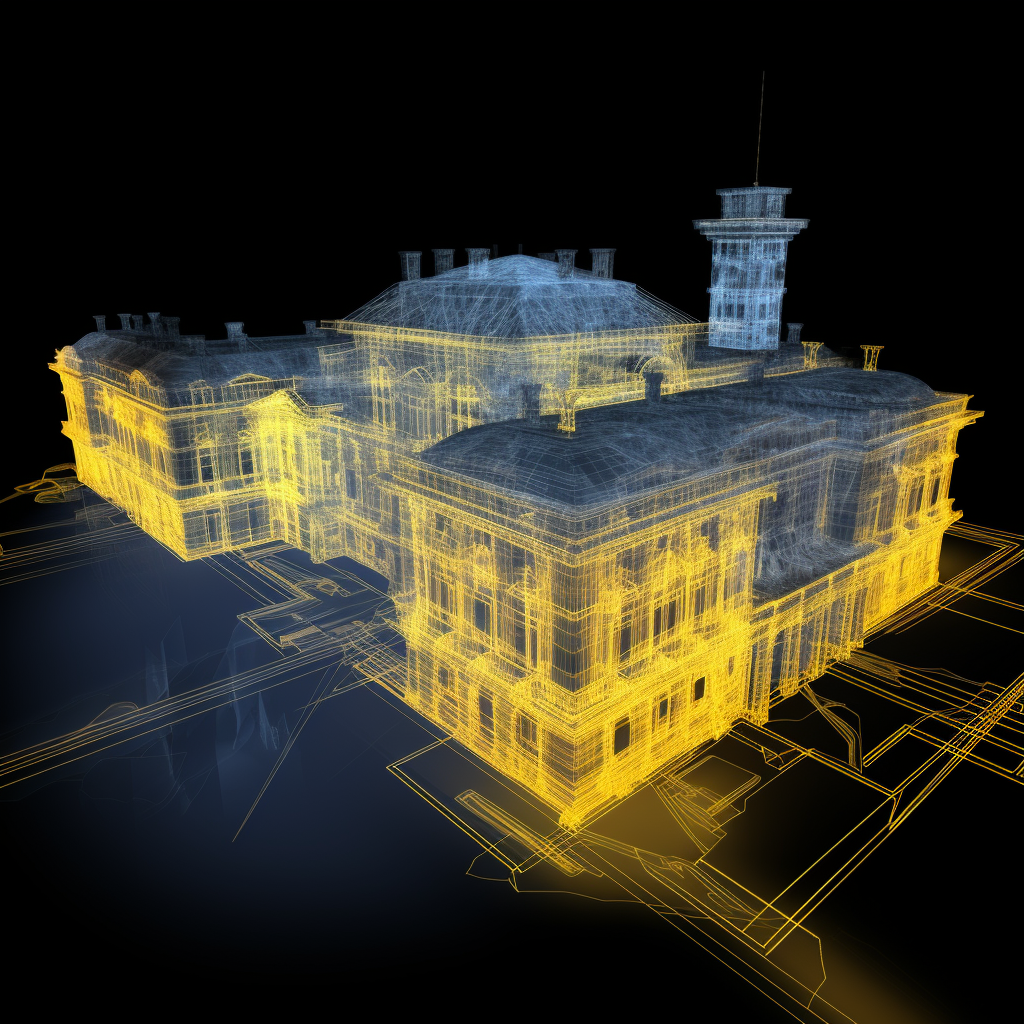
Robotic ImagingOctober 20, 2023
The AEC industry is undergoing a remarkable transformation in the modern era, largely due to technological advancements that are reshaping various sectors. Among these innovations, the integration of advanced algorithms and machine learning techniques in object recognition technologies has emerged as a powerful tool, revolutionizing the way architects and designers operate. These technologies hold the capacity to automatically identify and classify architectural elements within LiDAR point clouds, encompassing walls, doors, windows, and other essential features. Today, we're delving into the multifaceted ways in which object recognition technologies are revolutionizing the architecture industry, with a particular emphasis on the indispensable role of human expertise in conjunction with these technological advancements.
Automated Modeling: Streamlining Architectural Design
One of the most profound contributions of object recognition algorithms to the field of architecture is their ability to streamline the modeling process. By analyzing LiDAR point clouds, these algorithms can autonomously generate highly detailed 3D models of buildings and structures. This innovation not only dramatically reduces the manual effort previously required for creating accurate architectural designs but also substantially enhances the precision and quality of architectural models. This enhancement makes these models more dependable for a wide range of applications, from design proposals to presentations. But because this process has been so quick, it completely revolutionizes the standard timelines.
Efficiency in the Design Process: Empowering Architects
Object recognition technologies play a pivotal role in accelerating the design process by providing architects with more accurate and detailed information about existing structures. By automating the identification of architectural elements, these technologies empower architects to make informed decisions and fine-tune their designs accordingly. Consequently, architects can channel their efforts towards the creative aspects of their work, rather than spending excessive time on data collection and manual assessments. We've also previously discussed how repeat site visits are typically required when using traditional methods.
Site Analysis and Documentation: Aiding Decision-Making
Object recognition technologies are equally instrumental in site analysis and documentation. Their ability to automatically identify and classify architectural features from LiDAR point clouds equips architects with invaluable insights into existing structures. This information proves indispensable for assessing the condition of buildings, analyzing the impact of proposed structures on the surrounding environment, and generating accurate documentation for construction projects. Hence, these technologies support the decision-making process throughout the project lifecycle, contributing to more well-informed and ultimately more successful architectural endeavors. Site documentation will become something professionals routinely reference, so it's crucial to have the most accurate data on hand.
Improved Accuracy and Precision: The Role of Machine Learning
The continuous learning and adaptation of machine learning algorithms underpinning object recognition technologies result in heightened accuracy and precision in their tasks. As these technologies evolve and adapt, they become more reliable in identifying and classifying architectural elements. The improved accuracy not only reduces errors in architectural designs but also significantly impacts the overall success of a project. With fewer errors, architectural plans are more likely to align with the intended vision, meet safety standards, and adhere to regulatory requirements. Machine learning algorithms can be trained to automatically process and analyze LiDAR point clouds. This enables the extraction of valuable information such as building features, terrain characteristics, and vegetation mapping. A newer development to mention and where machine learning has made significant strides is semantic segmentation. Semantic segmentation algorithms can classify individual points within a LiDAR point cloud into different categories, such as vegetation, buildings, roads, and water bodies. In a few years, imagine the technology to emerge that completely produces an accurate model, perfectly documented within minutes!
The Symbiotic Relationship: Human Expertise and Technological Innovation
While object recognition technologies offer substantial benefits to the architecture industry, it is imperative to underscore that human expertise and judgment remain fundamental elements of the design process. Architects and designers must collaborate with these technologies, utilizing them as tools to augment their skills and make more informed decisions. It is the synergy between human creativity and technological innovation that holds the key to the most successful architectural designs.
Overall, the integration of object recognition technologies into the architecture industry is ushering in a new era of efficiency and precision. These technologies automate modeling, expedite the design process, assist in site analysis, and improve accuracy, making them invaluable tools for architects and designers. However, it is essential to recognize that human expertise remains central to the design process, and the symbiotic relationship between human creativity and technological innovation is where the true potential of these advancements is unlocked. As the architecture industry continues to evolve, the integration of object recognition technologies promises to reshape the way we design and build structures, ultimately enhancing the quality and sustainability of architectural endeavors.

